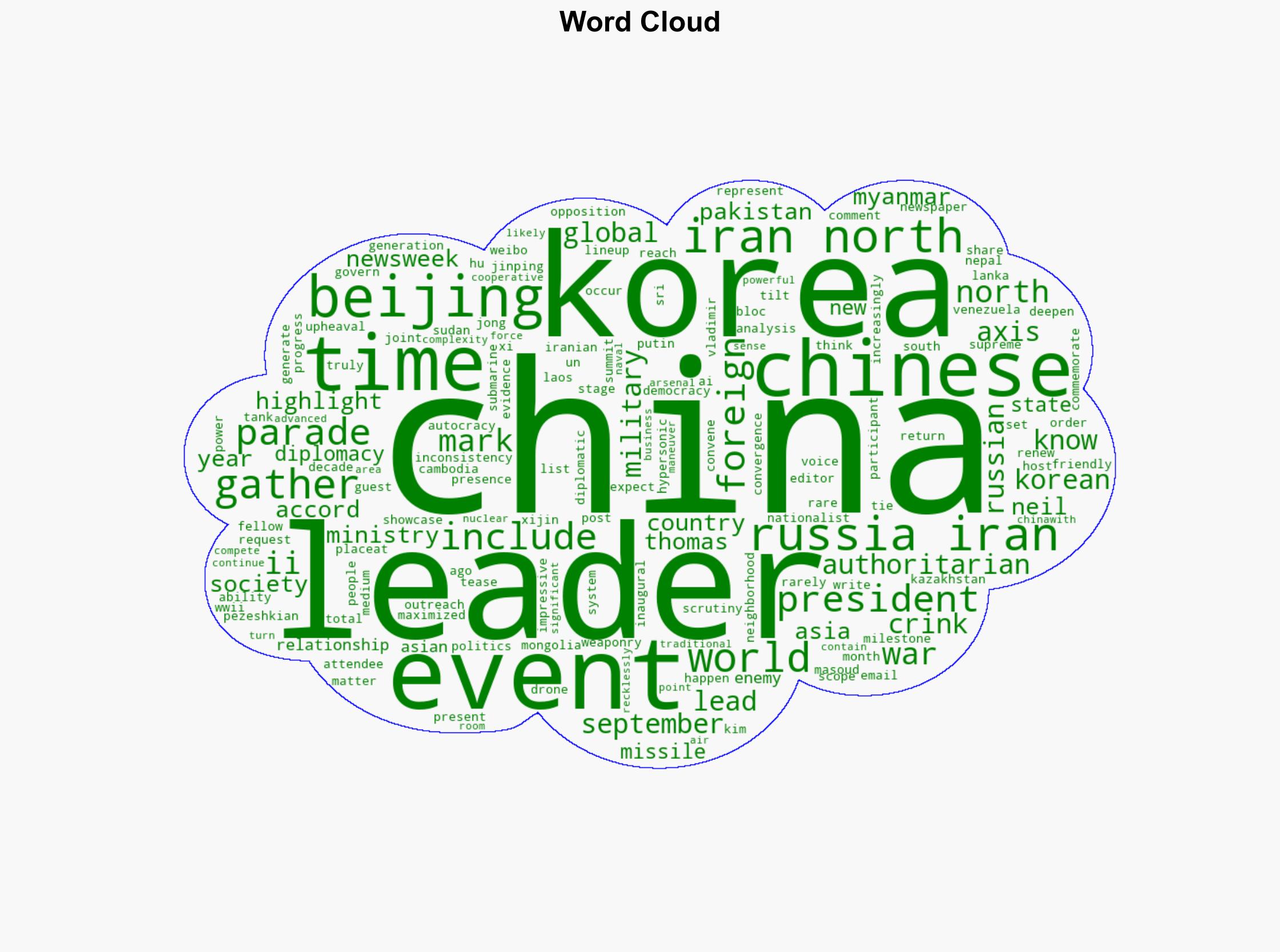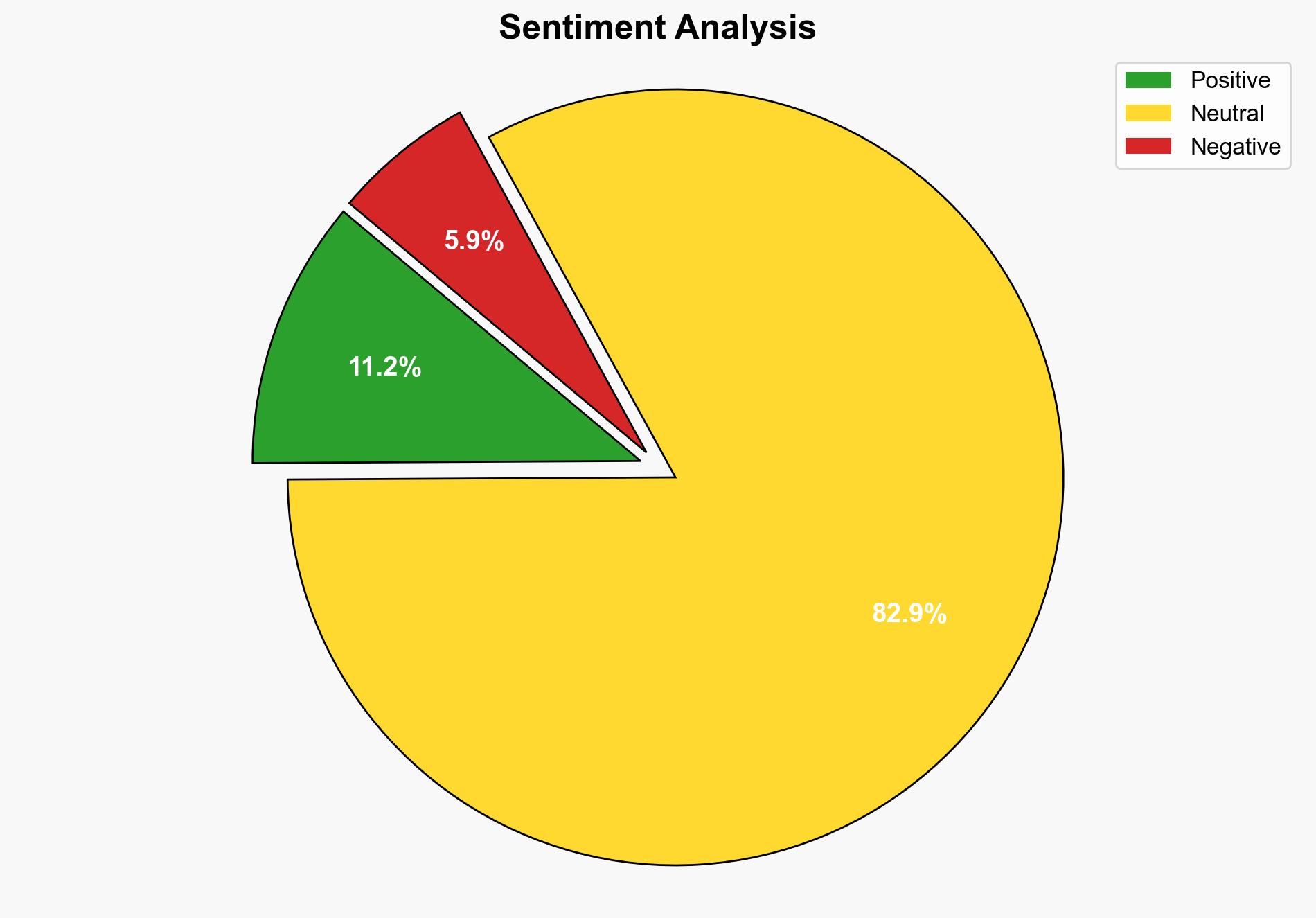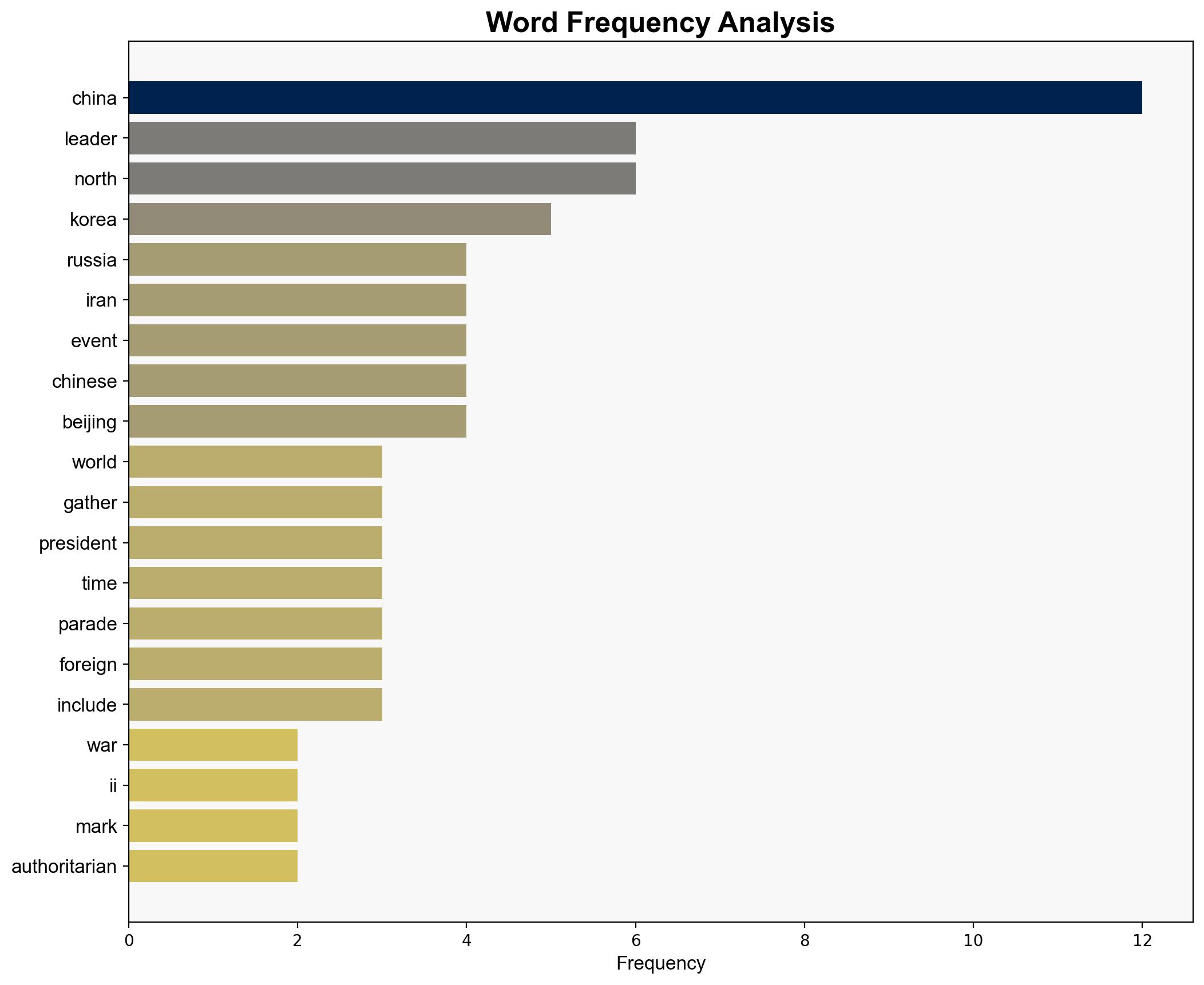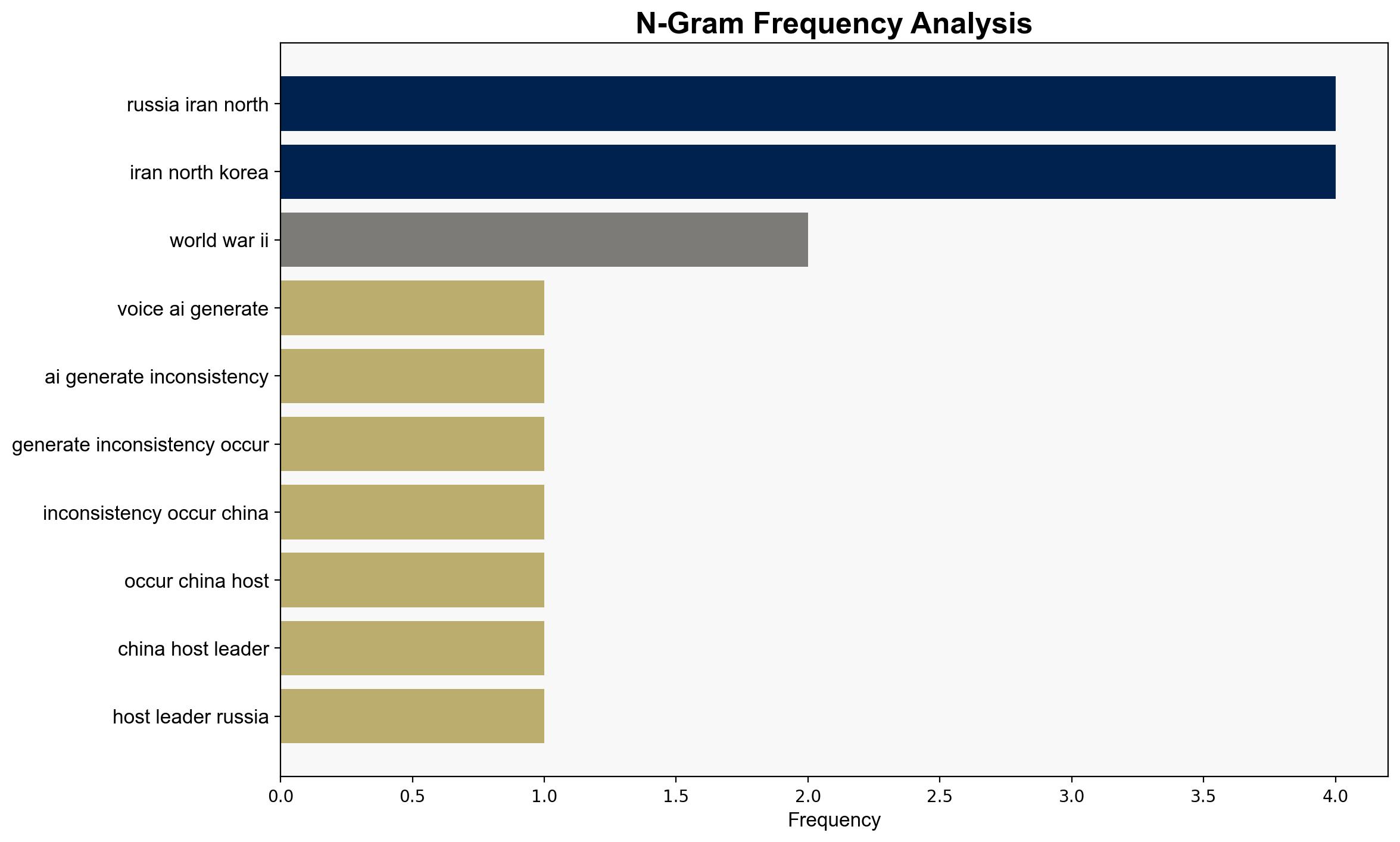Map Shows China Calling New ‘Axis’ Leaders to Beijing – Newsweek
Published on: 2025-08-29
Intelligence Report: Map Shows China Calling New ‘Axis’ Leaders to Beijing – Newsweek
1. BLUF (Bottom Line Up Front)
China’s recent diplomatic engagement with Russia, Iran, and North Korea signals a potential strategic alignment that could challenge the current global order. The hypothesis that China is forming a new “axis” of authoritarian states is better supported by the evidence. Confidence level: Moderate. Recommended action: Increase diplomatic engagement and intelligence monitoring to assess the depth of these alliances and potential impacts on regional stability.
2. Competing Hypotheses
1. **Hypothesis A**: China is forming a strategic alliance with Russia, Iran, and North Korea to counterbalance Western influence and reshape the global order.
2. **Hypothesis B**: The gathering is primarily symbolic, aimed at showcasing China’s diplomatic reach and military capabilities without indicating a formalized alliance.
Using Analysis of Competing Hypotheses (ACH), Hypothesis A is better supported due to the presence of key authoritarian leaders and the timing of the military parade, which suggests a coordinated message of unity against Western powers.
3. Key Assumptions and Red Flags
– **Assumptions**: Hypothesis A assumes a high level of strategic coordination among the involved countries. Hypothesis B assumes the event is largely ceremonial.
– **Red Flags**: Lack of explicit statements from the involved countries about the nature of their cooperation. The absence of comments from Chinese, North Korean, and Russian foreign ministries raises questions about transparency.
– **Cognitive Bias**: Confirmation bias may lead analysts to overemphasize the significance of the gathering as a strategic alliance.
4. Implications and Strategic Risks
– **Geopolitical**: A formalized alliance could lead to increased tensions with Western countries and destabilize regional security.
– **Economic**: Potential sanctions or trade disruptions if the alliance challenges international norms.
– **Cyber**: Increased cooperation could lead to enhanced cyber capabilities and threats.
– **Psychological**: The perception of a new “axis” could influence global public opinion and diplomatic relations.
5. Recommendations and Outlook
- Enhance diplomatic channels with China, Russia, Iran, and North Korea to gain insights into their strategic intentions.
- Increase intelligence collection and analysis on military developments and diplomatic communications among these countries.
- Scenario Projections:
- Best Case: The gathering remains symbolic, with no significant shift in alliances.
- Worst Case: A formalized alliance leads to regional conflicts and economic disruptions.
- Most Likely: Continued diplomatic engagements with occasional joint military exercises.
6. Key Individuals and Entities
– Xi Jinping
– Vladimir Putin
– Kim Jong Un
– Masoud Pezeshkian
7. Thematic Tags
national security threats, geopolitical alliances, regional stability, military diplomacy





